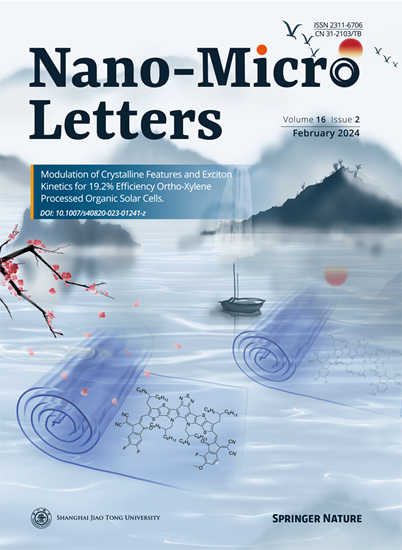A Hierarchical Short Microneedle-Cupping Dual-Amplified Patch Enables Accelerated, Uniform, Pain-Free Transdermal Delivery of Extracellular Vesicles.
IF 26.6
1区 材料科学
Q1 Engineering
引用次数: 0
Abstract
Microneedles (MNs) have been extensively investigated for transdermal delivery of large-sized drugs, including proteins, nucleic acids, and even extracellular vesicles (EVs). However, for their sufficient skin penetration, conventional MNs employ long needles (≥ 600 μm), leading to pain and skin irritation. Moreover, it is critical to stably apply MNs against complex skin surfaces for uniform nanoscale drug delivery. Herein, a dually amplified transdermal patch (MN@EV/SC) is developed as the stem cell-derived EV delivery platform by hierarchically integrating an octopus-inspired suction cup (SC) with short MNs (≤ 300 μm). While leveraging the suction effect to induce nanoscale deformation of the stratum corneum, MN@EV/SC minimizes skin damage and enhances the adhesion of MNs, allowing EV to penetrate deeper into the dermis. When MNs of various lengths are applied to mouse skin, the short MNs can elicit comparable corticosterone release to chemical adhesives, whereas long MNs induce a prompt stress response. MN@EV/SC can achieve a remarkable penetration depth (290 µm) for EV, compared to that of MN alone (111 µm). Consequently, MN@EV/SC facilitates the revitalization of fibroblasts and enhances collagen synthesis in middle-aged mice. Overall, MN@EV/SC exhibits the potential for skin regeneration by modulating the dermal microenvironment and ensuring patient comfort.一种分级短微针罐双放大贴片,可加速、均匀、无痛地经皮递送细胞外囊泡。
微针(MNs)已被广泛研究用于大剂量药物的透皮递送,包括蛋白质、核酸,甚至细胞外囊泡(ev)。然而,为了充分穿透皮肤,传统的MNs使用长针(≥600 μm),导致疼痛和皮肤刺激。此外,将纳米颗粒稳定地应用于复杂的皮肤表面以实现均匀的纳米级药物递送至关重要。本研究通过将短nm(≤300 μm)的章鱼吸盘(SC)分层集成,开发了双放大透皮贴片(MN@EV/SC)作为干细胞衍生的EV给药平台。MN@EV/SC利用吸力效应诱导角质层的纳米级变形,最大限度地减少皮肤损伤,增强纳米颗粒的粘附性,使EV能够深入真皮层。当不同长度的MNs应用于小鼠皮肤时,短的MNs可以引起与化学粘合剂相似的皮质酮释放,而长MNs则会引起迅速的应激反应。MN@EV/SC对EV的穿透深度(290µm)显著高于MN(111µm)。因此,MN@EV/SC促进了成纤维细胞的再生,并增强了中年小鼠的胶原合成。总体而言,MN@EV/SC通过调节皮肤微环境和确保患者舒适度显示出皮肤再生的潜力。
本文章由计算机程序翻译,如有差异,请以英文原文为准。
求助全文
约1分钟内获得全文
求助全文
来源期刊

Nano-Micro Letters
NANOSCIENCE & NANOTECHNOLOGY-MATERIALS SCIENCE, MULTIDISCIPLINARY
CiteScore
32.60
自引率
4.90%
发文量
981
审稿时长
1.1 months
期刊介绍:
Nano-Micro Letters is a peer-reviewed, international, interdisciplinary, and open-access journal published under the SpringerOpen brand.
Nano-Micro Letters focuses on the science, experiments, engineering, technologies, and applications of nano- or microscale structures and systems in various fields such as physics, chemistry, biology, material science, and pharmacy.It also explores the expanding interfaces between these fields.
Nano-Micro Letters particularly emphasizes the bottom-up approach in the length scale from nano to micro. This approach is crucial for achieving industrial applications in nanotechnology, as it involves the assembly, modification, and control of nanostructures on a microscale.
 求助内容:
求助内容: 应助结果提醒方式:
应助结果提醒方式:


